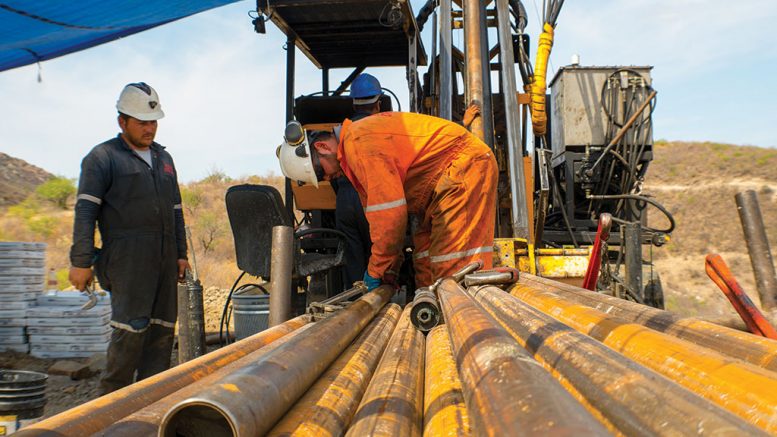As global financial markets began to melt down in response to the coronavirus pandemic, SilverCrest Metals (TSX: SIL; NYSE-A: SILV) inked a $75 million bought-deal financing on Mar. 11 that was underwritten by a banking syndicate led by National Bank Financial (and including Eight Capital and Scotia Capital).
The deal was terminated seven days later.
National Bank Financial said it was terminating its obligations under the deal citing a “disaster out” clause in its agreement due to the coronavirus pandemic, SilverCrest said in a Mar. 18 press release.
SilverCrest is digging in its heels, however, asserting that the signed agreement “created a binding legal obligation on the part of National Bank Financial to complete the transaction as is customary in Canada for bought-deal financings.”
The company disputes the bank’s pandemic justification as the situation “was fully evident when the bought-deal financing was agreed upon with expectations that the precious metals market would respond positively to this known risk.”
SilverCrest says it intends to pursue legal options against National Bank Financial for its breach of the agreement.
Bought deal financings are generally the most favoured equity financing method for issuers as the underwriting syndicate of bankers assures a price and commits to purchase the entire amount of the offer, then reselling it to its investor clients.

Drillers at SilverCrest Metals’ Las Chispas gold-silver property in Sonora, Mexico. Credit: SilverCrest Metals.
The financing agreement to sell 9.1 million SilverCrest shares at $8.25 apiece, a 5% discount to the $8.69 share price prior to the announcement, would have been lucrative for the bankers. They would have grossed 5% of the $75 million, or about $3.75 million, plus further potential commission under a 15% over-allotment option to place up to an additional 1.37 million shares if there was investor appetite.
The underwriters in the now shelved financing seemingly misjudged the macro environment for precious metal equities as well as for the underlying commodities. On the day the $8.25 per share bought deal was announced, SilverCrest stock in Toronto closed off 16% to $7.30. Additionally, in the following days the shares melted down further, ultimately touching a low of $4.50 making the planned $8.25 per share deal all but impossible to execute.
Exacerbating SilverCrest’s eroding share price was the plummet in the silver price, which dropped from the US$17.00 per oz. level when the financing was announced, down to an almost decade low US$12.50 per oz. level a few days subsequent.
The timing of SilverCrest’s attempted financing came as a bit of a surprise to the market. Less than three months prior, the company closed $105 million in financings to top up its treasury as it continues to advance its Las Chispas silver-gold project in Mexico, about 180 km northeast of Hermosillo in Sonora state.
Las Chispas is a high-grade, vein-hosted silver deposit that has seen an aggressive drill campaign by the company over the past few years. Roughly one year ago, a preliminary economic assessment (PEA) tabled a robust development scenario with a 1,250 tonne per day production rate and an initial mine life of 8.5 years. Average annual production is forecast at 5.38 million oz. silver and 55,700 oz. gold, or 9.6 million oz. silver-equivalent over the life-of-mine, with higher production rates envisioned over the initial four years.

Workers at a portal at SilverCrest Metals’ Las Chispas gold-silver project in Sonora, Mexico. Credit: SilverCrest Metals.
Average diluted grades modeled in the PEA are 411.0 grams silver per tonne and 4.05 grams gold per tonne, or 714 grams silver equivalent (using a 75:1 silver-to-gold ratio calculated using long-term silver and gold prices of $17 per oz. silver and $1,225 per oz. gold with average metallurgical recoveries of 90% silver and 95% gold).
Initial capital expenditure came in at a very modest US$100.5 million under the Las Chipas PEA, with additional life-of-mine sustaining capital of US$50.3 million. The PEA tabled a high-margin operation with a short payback period of just nine months, an after-tax internal rate of return of 78% and an after-tax net present value of US$406.9 million.
The company says drilling to date has only really tested 10 of the 36 known veins on Las Chispas and it is budgeting about US$16 million for its full-year 2020 drill program of about 125,000 metres.
SilverCrest is currently operating 12 drill rigs (including one underground rig) on the project and plans to complete about 150 expansion holes, totalling between 35,000 to 45,000 metres, by mid-year when it also aims to deliver updated resource estimates, its maiden reserves and a feasibility study.
As of the end of February 2020, the company reported US$87 million in its treasury.
The company has a strong institutional shareholder component at a reported level of around 57%. Management and directors own just over 11% of the company and SSR Mining (TSX: SSRM; NASDAQ: SSRM) owns 7.6%, a position secured when it invested in SilverCrest in late 2018.
At press time in Toronto, shares of SilverCrest recovered from the recent sell-down to $4.50 to close at $7.11, giving the company a $777 million market capitalization based on its 109-million shares outstanding. The stock has a 52-week trading range of $10.98-$3.99.


Be the first to comment on "SilverCrest weighs options after underwriter bails"